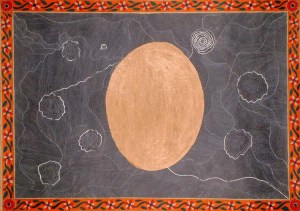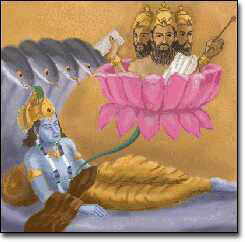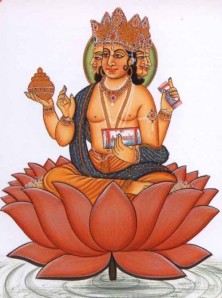Let’s find out all the legends associated with this ‘mystery’!
1.
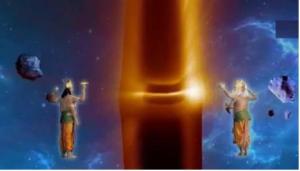 According to the Shiv Purana, once Brahma and Vishnu had an argument on who was the most powerful amongst the Trimurti. The argument became so heated that the other gods asked Shiva, the third of the triad, to intervene. Shiva assumed the form of a gigantic lingam (the phallic symbol of Shiva). The lingam was of flaming fire and it went up to the heavens and descended into the nether regions underneath the earth. Both Brahma and Vishnu agreed that the one who finds out how enormous the fiery lingam was and where it ended will be considered the most powerful among the Trimurti.
According to the Shiv Purana, once Brahma and Vishnu had an argument on who was the most powerful amongst the Trimurti. The argument became so heated that the other gods asked Shiva, the third of the triad, to intervene. Shiva assumed the form of a gigantic lingam (the phallic symbol of Shiva). The lingam was of flaming fire and it went up to the heavens and descended into the nether regions underneath the earth. Both Brahma and Vishnu agreed that the one who finds out how enormous the fiery lingam was and where it ended will be considered the most powerful among the Trimurti.Brahma took the form of a swan and went upwards along the length of the ascending lingam while Vishnu assumed the form of a boar and descended along the lingam into the nether regions.
Both went on and on but neither could reach the ends.
Vishnu, being very clever, realized that he had been outdone by Shiva and came back to acknowledge Shiva as the greatest of the triad.
[caption id="attachment_397" align="aligncenter" width="300"]
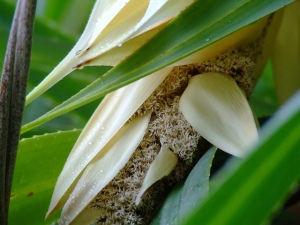 Ketaki Flower[/caption]
Ketaki Flower[/caption]Brahma, on the other hand, decided that he could get past Shiva with trickery. On his ascent to determine the end of the upper part of the lingam, Brahma passed the ketaki flower (Pandanus odorifer). Brahma requested ketaki to testify before Shiva that he had reached the uppermost end to which the flower agreed. When brought before Shiva, the flower told Shiva that he had observed Brahma reach the upper end of the lingam.
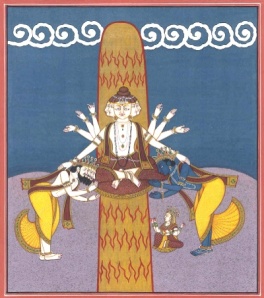 Shiva immediately found out about the lie and became very angry. He cursed Brahma with the horror of not ever being worshipped on earth. Also the ketaki flower was cursed with the depressing condition of never ever being used in any Hindu worshiping rituals.
Shiva immediately found out about the lie and became very angry. He cursed Brahma with the horror of not ever being worshipped on earth. Also the ketaki flower was cursed with the depressing condition of never ever being used in any Hindu worshiping rituals.2.
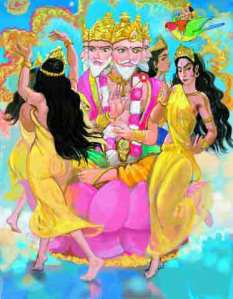 According to the Matsya Purana, Shatarupa was known by different names, including Satarupa, Sarasvati, Sandhya or Brahmi.
According to the Matsya Purana, Shatarupa was known by different names, including Satarupa, Sarasvati, Sandhya or Brahmi.When Brahma was creating the universe, he made a female deity known as Shatarupa (she of a hundred beautiful forms).
Brahma was immediately infatuated by the goddess's beauty and unable to contain his passion (kaam) pursued her wherever she went. Shatarupa did not want to be associated with carnal desire and moved in various directions to avoid his gaze but wherever she went, Brahma developed another head until he had four, one for each direction of the compass. Desperate, Shatarupa leaped over him to stay out of his gaze even for a moment. A fifth head, however, appeared above the others. Thus, Brahma developed five heads.
At this moment Shiva appeared, cut off the top head and determined that since Shatarupa was Brahma's daughter (being created by him), it was wrong and incestous of Brahma to become obsessed with her. He directed that there be no proper worship in India for the "unholy" Brahma. Thus, only the other two Gods of the Trimurti, Vishnu and Shiva continue to be worshipped, while Brahma is almost totally ignored. Ever since the incident, Brahma has been reciting the four Vedas, one from every mouth, in his attempt at repentance.
Another version of the story describes how all of the animals of all kinds in today's world were born. After Brahma had grown his fifth head Shatarupa had turned into a cow to avoid his lust. When Brahma found out he turned into a bull in order to continue to follow Shatarupa, eventually finding her. She hid in the form of another animal in order to quell his unnatural lust. But, alas, Brahma found out again and incarnated as the appropriate male animal. Again, she hid in the form of another animal. This continued until and Shiva finally ripped off one of Brahma's five heads to put an end to his lust.
[caption id="attachment_400" align="aligncenter" width="300"]
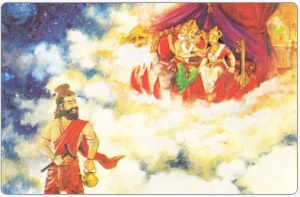 Sage Bhrigu in Brahma Lok[/caption]
Sage Bhrigu in Brahma Lok[/caption]3. Once upon a time many great sages gathered at the bank of river Saraswati to participate in Maha yagya organized at that time. Maharishi Bhrigu was also present there. All the great saints and sages could not decide that out of the Trimurti - Lord Vishnu, Brahma and Shiv who is pre-eminent and to whom should they offer Pradhanta (Master) of that yagya. With the consent of all the great saints present there, it was decided that Maharishi Bhrigu will test and decide who was pre-eminent.
Upon being entrusted with the task Maharishi Bhrigu decided to test Lord Brahma first. He went on to see Lord Brahma in Brahmalok. On reaching Brahmalok Maharishi displayed utter disrespect to Lord Brahma on purpose. Lord Brahma got angry as Bhrigu was his son and wanted to punish Maharishi but Maha Saraswati, wife of Lord Brahma saved Maharishi from his anger (in some versions he himself composed himself to hide the anger). Angry with disrespect and not finding bRahma worth of being ‘Supreme’ Maharishi Bhrigu cursed Lord Brahma that no one will worship Brahma in Kaliyug.
In another version Brahmarshi Bhrigu cursed Brahma because when he went to Brahma to invite him for a Yagna he was deeply immersed in the music played by Saraswati and couldn't hear Bhrigu's calls.
4. According to the Bhavishya Purana certain 'daityas' or demons had begun to worship Brahma and therefore the 'devas' of heaven could not defeat them. In order to mislead the daityas from the worship of Brahma, Vishnu appeared on Earth, as Buddha and Mahavira. With various arguments he convinced the daityas to leave the worship of Brahma. Having left the worship of Brahma, the daityas lost power and were hence defeated.
In the next post we see what was Step 3 for Lord Brahma in the creation of the world.
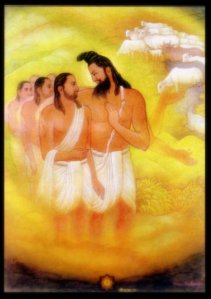
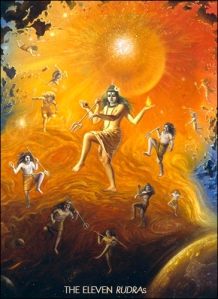
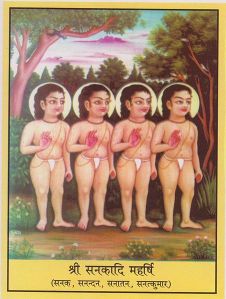
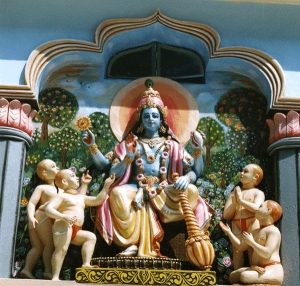
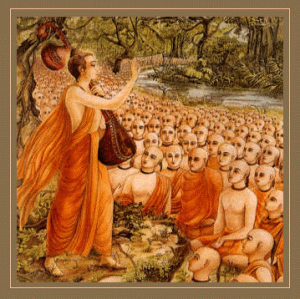
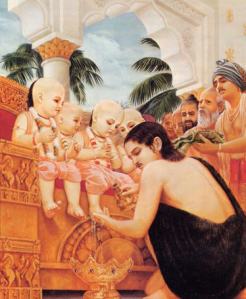
![brahma_vishnu_shiva[1]](http://mythnosis.files.wordpress.com/2012/12/brahma_vishnu_shiva1.jpg?w=233)
